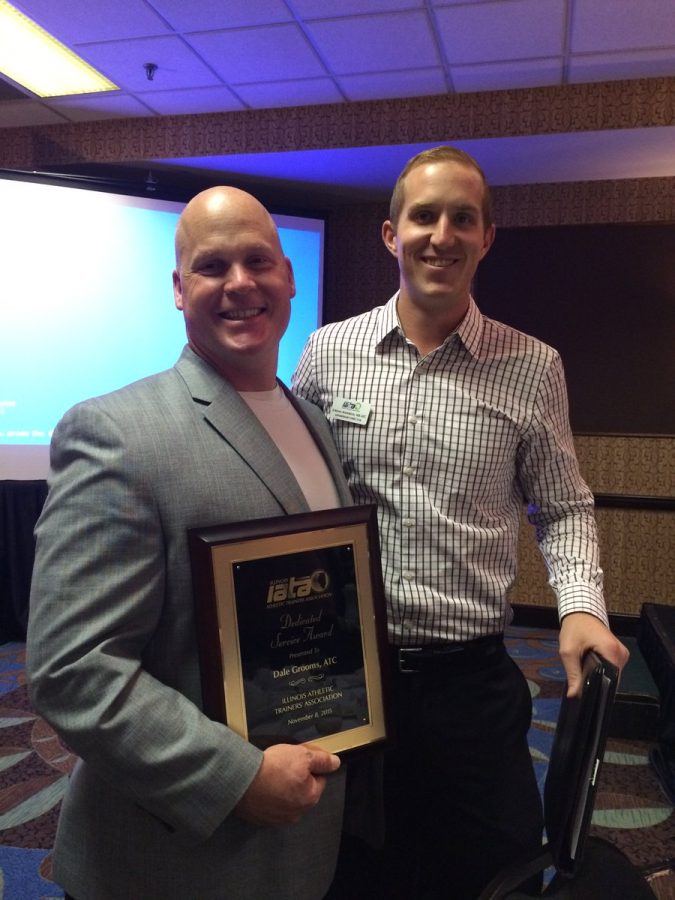Dale Grooms: the man behind the New Trier sports machine
Grooms plays a vital role in keeping players healthy and on the field
There is a lot that goes into making a sports team function effectively. There are the players of course, but the coaches, strength coaches, and equipment organizers are all responsible for helping teams succeed.
One important role that gets very little fanfare is the person who makes sure the team is healthy and injury-free: the athletic trainer.
At New Trier, the head athletic trainer is Dale Grooms, a licensed professional who works with every sports team to prevent injury and rehabilitate players after injuries.
Although it means serious hours and serious responsibility, he knows how important a good athletic trainer can be to a team and how fulfilling it can be to help athletes improve and preserve their health.
Becoming an athletic trainer does not just mean learning which exercises stretch which muscles, and what to do when someone rolls their ankle. It is a serious process, which requires a degree even before applying for a license.
“Not only do you have to take the credentialed courses, you also have to pass a national exam in order to call yourself an athletic trainer,” explained Grooms.
According to Grooms, the job of an athletic trainer is not as much about seeking personal success and greatness as it is helping others do so themselves.
The most important part, he said, is to be on the spot when an athlete is injured and to help them recover and later to succeed in their sport, which he referred to as “extremely gratifying.”
Grooms also said that the position is important for providing perspective to parents and coaches.
He emphasized the fact that coaches might be biased in wanting valuable players to play through injury, and that parents may also want more out of their child than is necessarily healthy, making it imperative to have an unbiased source who can determine if they should play or not.
“[When] removing the player from play, you have a third party being able to evaluate an athlete and determine if they can return back to play,” said Grooms.
Although tending to injuries in the moment is important, it is not the entirety of the job. Another major part of the job is working with coaches and strength programs to prevent those injuries from happening in the first place.
“One year it’s like ‘man we got a lot of ankle sprains, we gotta do some stuff to prevent ankle injuries,’” said Grooms.
Grooms added that athletic trainers work to prevent injury during practice more than during games.
“When you think about it, there are more practices than games, so there’s more opportunity to get hurt or have an injury during practices compared to games,” said Grooms.
While being an athletic trainer is rewarding in many respects, like any other job, it has its downsides.
Because the athletic trainer has to be with every sports team to catch injuries as soon as they happen, Grooms stays at school from the first practice to the final practice which leads to many long workdays.
“Today, I’ll be going from 5:30 in the morning to about 9 o’clock at night because of the practices and games going on, but it’s enjoyable,” said Grooms.
Grooms also stressed that while anyone else would consider those long hours, he only does them because he loves the job. He even said that some of the more perilous parts of dealing with the health of others does not make the job hard.
“It can be difficult when you’re dealing with some scarier injuries, but it’s not hard, though, it’s just kind of scary,” said Grooms.
To Grooms, athletic training is not just about rehabilitating players after injuries and making practice routines to prevent injury. It is about having the expertise to make success possible for others.
“You have to want other people to improve, and not just say ‘look at me,’ because to me it’s like, ‘no, no, no,’ you have to let others shine,” said Grooms.






































